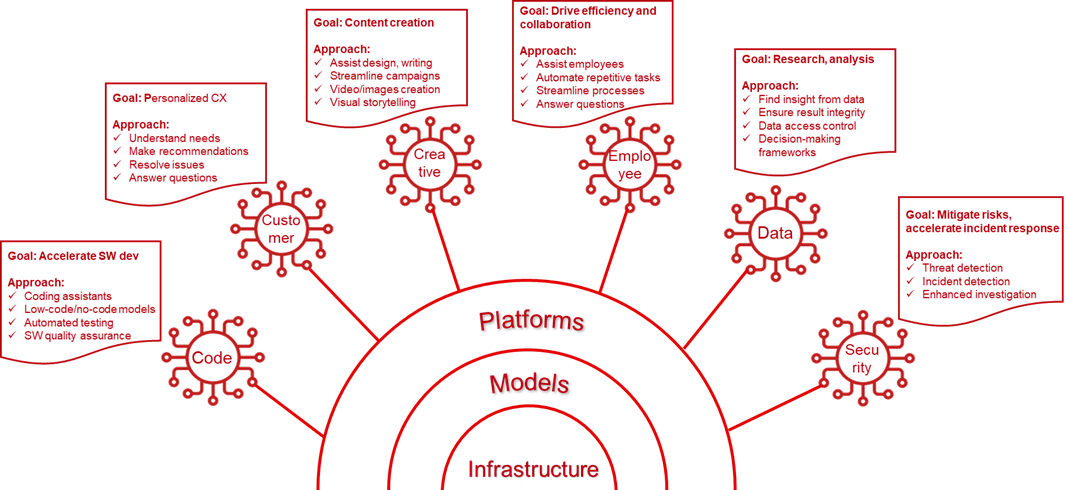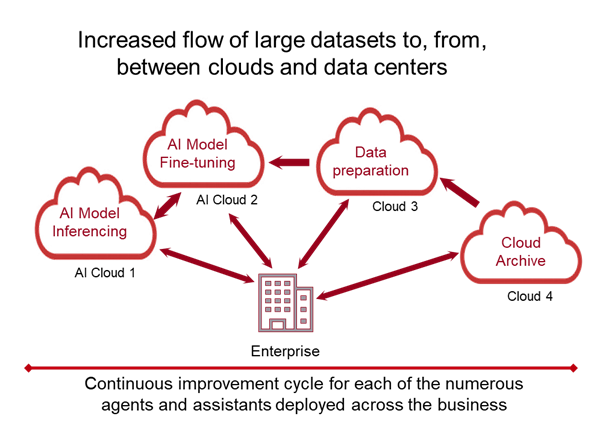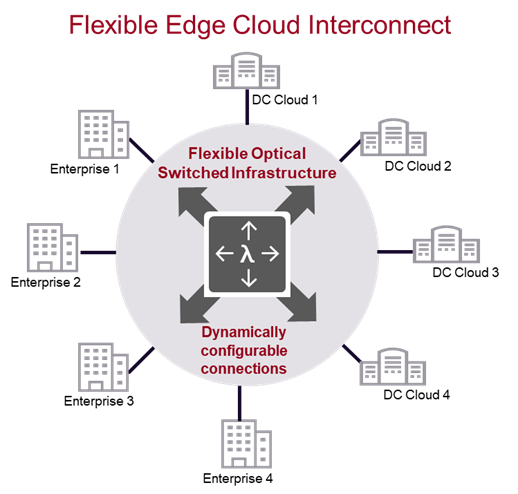As enterprises race to turn AI into growth and a competitive advantage, Ciena’s Francisco Sant’Anna explains how service providers that deliver high-speed, high-capacity connectivity can become indispensable partners in driving transformation.
This blog is the second in a series on AI. Read part one here: Building networks for AI: connectivity opportunities for network operators.
Enterprises are entering into a new era of digital transformation centered around AI, as it promises to be an inflection point to boost productivity across most industries. Companies are accelerating IT investments, embarking on a data-driven hyper-automated journey to control costs, improve customer experiences, and differentiate products and services. This path brings about new connectivity challenges, and network operators that can deliver the flexibility and performance required by emerging AI workloads will be favored as AI enablers and preferred networking partners.
Global enterprise AI investments are growing at an impressive compound annual growth rate (CAGR) of 39% and are expected to surpass $867 billion in 2029, according to IDC’s “Worldwide Artificial Intelligence IT Spending Forecast, 2025–2029” published in August 2025. Such massive investments will involve devices, services, applications, compute infrastructure, and a diversified set of application development, deployment, and management platforms.
The AI ecosystem is getting increasingly complex, with organizations relying on multiple technology providers to help build and operate their customized AI solutions, utilizing hardware and software spread across multiple IT environments. As AI systems rely on data, the success of their implementations is fully dependent on networks that can ensure the rapid and reliable flow of data across this dispersed IT infrastructure.
The enterprise AI journey and its connectivity implications
A consequential aspect of the enterprise AI journey is the progressive adoption of more multimodal AI systems, combining different types of data—text, images, audio, and video—to enhance contextual understanding. This approach is proving transformative across multiple use cases. In the healthcare sector, medical image processing is being combined with medical reports alongside patient history for enhanced insights in augmented diagnostics. In the insurance business, claims processing is being expedited by the automated analysis of customer-submitted images, video, and documentation. In the financial market, AI systems providing insights related to market sentiment are scanning commentary videos for nonverbal cues in addition to words. In manufacturing, multimodal sensors blend video, noise, and vibration information to refine the overall automation process. Computer vision is being deployed across many industries in applications like asset monitoring, safety and security, flow analysis, process assessment, and diverse video inspection and monitoring solutions.
As AI models transition from text-only to include richer data formats—especially high-definition images, video, and 3D models—data volumes multiply quickly, as does the bandwidth required to move it between physical locations.
Many organizations are starting their AI journey by implementing AI-assisted enterprise search to tame information sprawl. The faster access to data and deeper insights these tools deliver can significantly boost employee productivity and accelerate decision-making while improving compliance. AI platforms offer solutions to achieve it by integrating, indexing, analyzing, and ranking the company’s knowledge base and data sources. However, the volume of data that flows in these processes can be staggering. For instance, the Mayo Clinic has given its scientific researchers access to 50 petabytes worth of clinical data through AI Search. This amount of data would take over 45 days to be transported on a fully dedicated 100Gb/s network connection. Consequently, it’s reasonable to conclude that organizations working with such extensive data lakes will need to rely on network connections of 400Gb/s, 800Gb/s, and higher.
But the pinnacle of the new enterprise digital transformation is Agentic AI. AI applications are evolving from chatbots to autonomous agents that can handle complex workflows and make decisions to achieve specific goals. These software entities can be custom-built from AI models to interact with their surroundings, gather information, reason, and act to solve problems, with or without human intervention. Agentic AI is #1 on Gartner’s top technology trends for 2025, and large organizations are already deeply engaged in developing agents tailored to their business challenges, with diverse roles in various domains. Figure 1 shows some of the most popular types of agents that enterprises are currently developing.

Figure 1. Most common types of agents that enterprises are developing (source: inspired by Google Cloud's analysis)
Tools for creating new and more sophisticated agents are proliferating at an impressive speed. Building agents specific to an enterprise’s environment and processes typically entails fine-tuning a commercial AI model with company data. The process of data preparation and model customization uses multiple software platforms and hardware resources. After it’s done, running the agents requires the continuous use of inferencing infrastructure. The most convenient or cost-efficient solution for each of these platforms or resources may be located at a different data center or cloud, meaning massive collections of business records, customer data, call recordings, video footage, or any sort of business data must be transported several times throughout the process. And this will take place for each of the multiple agents in every area of the business and for each new version in their cycle of continuous improvement. This means constantly moving enormous datasets between clouds and data centers.

Figure 2. Building AI agents will require the frequent movement of massive datasets
Data flows required for the development and continuous improvement of AI agents represent a new connectivity demand on top of the already growing enterprise network traffic—and a critical one, given the urgency and importance of these agents for the success of businesses. Once operational, agents become autonomous entities interfacing with multiple systems, data sources, and with each other. This may happen locally in some cases, but will often involve dispersed resources, creating even more network demand. Multi-agentic AI frameworks are quickly evolving, but it’s still too early to know the required latency and bandwidth these architectures will demand. However, there is no doubt enterprise networks will need far better performance to keep pace.
The opportunity for communications service providers (CSPs)
AI becoming a critical success factor for enterprises is great news for CSPs that are fiber-rich and innovative when it comes to adopting and rapidly implementing new technologies. As AI capabilities grow vital to the productivity and differentiation of organizations, accelerating their AI journey becomes a key executive priority—elevating the importance of the network as a foundational enabler of AI.
Organizations are searching for networking capabilities that allow them to seamlessly transport data to develop and operate their AI agents and assistants effectively. In general, it takes the form of high-capacity wave services with hundreds of Gb/s of bandwidth that CSPs can provide through scalable optical transport solutions, often combined with coherent routing and coherent plugs.

Figure 3. Technology enablers of high-capacity, scalable enterprise connectivity
However, point-to-point wave connectivity may not be the only or best fit for the complex scenarios where enterprise AI initiatives involve multiple software platforms and compute resources dynamically mobilized on different data centers and clouds. To lead enterprise customers in addressing these demands, innovative CSPs have been exploring high-capacity, high-scalability optical fabric solutions and network-as-a-service (NaaS) approaches that allow for flexible connectivity and bandwidth allocation to edge data centers and clouds as needed.

Figure 4. A model for flexible edge cloud interconnect
AI maturity is now a key indicator of economic health of an organization and an important valuation and differentiation driver of businesses across various industries. CSPs have a singular opportunity to become strategic partners along this journey and capture part of the value from these transformational endeavors. Achieving this requires the right technology capabilities, vision, and relationships. Ciena is equipped and committed to support you in this path regardless of where you are today on your unique AI journey.






